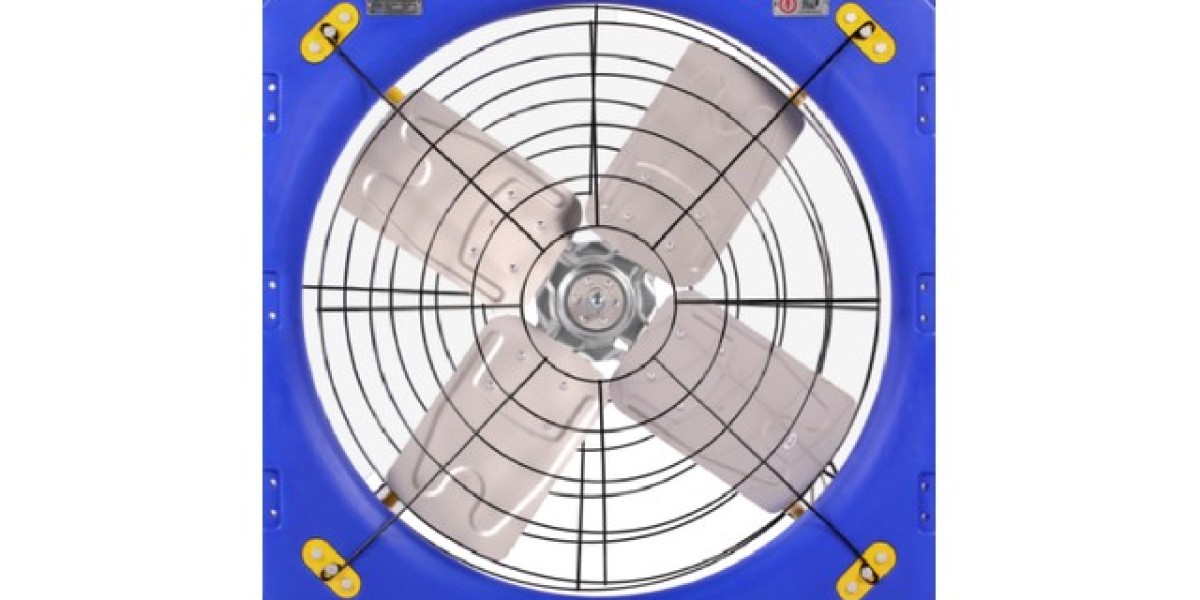The livestock industry is a cornerstone of global agriculture, providing essential resources such as meat, dairy, and wool. As the demand for these products continues to grow, so does the need for innovative solutions that ensure the efficient and humane management of livestock. One critical area where advancements are making a significant impact is livestock circulation solutions. These solutions encompass a range of practices and technologies designed to optimize the movement and management of animals within farms, ultimately enhancing animal welfare and farm efficiency.
Understanding Livestock Circulation
Livestock circulation refers to the controlled movement of animals within a farm or agricultural setting. This includes the flow of animals from one area to another, such as from pastures to barns, through various stages of production, or during transport to and from the farm. Effective livestock circulation is crucial for maintaining the health and well-being of animals, as well as for optimizing farm operations.
Traditional methods of livestock circulation often involve manual labor, such as herding animals or using physical barriers to guide their movement. However, these methods can be time-consuming, labor-intensive, and stressful for the animals. Poor circulation practices can lead to injuries, increased stress levels, and even decreased productivity. Therefore, implementing modern livestock circulation solutions is essential for improving the overall efficiency and welfare of farm operations.
Key Components of Livestock Circulation Solutions
Animal Handling Facilities
Design and Layout: One of the most critical aspects of livestock circulation is the design and layout of animal handling facilities. Modern facilities are designed to minimize stress and injury to animals while maximizing efficiency. Features such as curved chutes, non-slip flooring, and properly placed gates help guide animals smoothly and safely through various stages of handling.
Automated Gates and Chutes: Automated systems are increasingly being used to control the movement of livestock. These systems use sensors and actuators to open and close gates, allowing for precise control of animal flow. Automation reduces the need for manual labor, decreases the risk of injury, and ensures that animals are handled in a calm and controlled manner.
Animal Monitoring Systems
RFID and GPS Tracking: Radio-frequency identification (RFID) and GPS tracking technologies are becoming standard tools in livestock circulation. These systems allow farmers to monitor the location and movement of animals in real-time, providing valuable data on their behavior and well-being. This information can be used to optimize circulation patterns, identify potential issues, and ensure that animals are where they need to be at all times.
Health Monitoring: In addition to tracking movement, modern livestock monitoring systems can also track vital signs and health indicators. By monitoring factors such as heart rate, temperature, and activity levels, farmers can identify signs of stress or illness early, allowing for timely intervention and reducing the risk of disease spread.
Efficient Transport Systems
Loading and Unloading Systems: The process of loading and unloading livestock for transport is a critical aspect of circulation. Efficient loading systems, such as hydraulic lifts and adjustable ramps, reduce the stress on animals and minimize the risk of injury. These systems also streamline the process, saving time and labor.
Transport Vehicle Design: The design of transport vehicles plays a significant role in livestock circulation. Vehicles should be equipped with proper ventilation, non-slip flooring, and adequate space to ensure the comfort and safety of animals during transport. Innovations such as temperature-controlled compartments and shock-absorbing suspension systems further enhance the welfare of animals during transit.
Behavioral Insights and Training
Animal Behavior Understanding: A deep understanding of animal behavior is crucial for designing effective circulation systems. Livestock respond to their environment and handlers in specific ways, and knowledge of these responses can be used to create systems that minimize stress and encourage smooth movement. For example, cattle are more likely to move willingly through a chute if they can see other animals ahead of them, while sheep prefer to move in groups.
Handler Training: The role of the handler is also critical in livestock circulation. Proper training in low-stress handling techniques can make a significant difference in how animals respond to movement. Handlers trained in
animal behavior and stress management are better equipped to guide livestock through various stages of circulation without causing unnecessary fear or agitation. This not only improves animal welfare but also increases the efficiency of farm operations by reducing the time and effort required to move animals.
Benefits of Modern Livestock Circulation Solutions
Implementing advanced livestock circulation solutions offers several key benefits for both animals and farmers:
Improved Animal Welfare
Reduced Stress: Modern circulation solutions are designed to minimize stress, which is crucial for maintaining the health and productivity of livestock. Stress can negatively impact an animal’s immune system, leading to higher susceptibility to diseases. By reducing stress through better handling practices, improved facility design, and effective transport systems, farmers can enhance the overall well-being of their animals.
Injury Prevention: Proper circulation systems help prevent injuries that can occur during movement, such as slips, falls, or collisions. This is particularly important in high-density settings where animals are frequently moved. Reducing injuries not only improves animal welfare but also reduces veterinary costs and potential loss of livestock.
Enhanced Farm Efficiency
Labor Savings: Automation and efficient facility design significantly reduce the need for manual labor in livestock circulation. Automated gates, chutes, and monitoring systems allow for more streamlined operations, enabling farmers to manage larger herds with fewer workers. This leads to cost savings and allows labor to be allocated to other critical tasks.
Time Efficiency: Efficient livestock circulation systems reduce the time required to move animals from one area to another. This is particularly beneficial in large-scale operations where time management is crucial. Faster and more organized movement of animals leads to more productive use of time and resources on the farm.
Optimized Resource Use: By closely monitoring and managing livestock circulation, farmers can optimize the use of resources such as feed, water, and space. This not only contributes to cost savings but also promotes sustainability by reducing waste and improving overall farm management.
Better Data-Driven Decision Making
Real-Time Monitoring: The integration of RFID, GPS tracking, and health monitoring systems provides farmers with real-time data on their livestock. This information is invaluable for making informed decisions about animal management, including adjusting feeding schedules, identifying health issues early, and optimizing movement patterns.
Predictive Analytics: Advanced data analytics can be used to predict trends and potential issues in livestock circulation. For example, by analyzing movement patterns and health data, farmers can identify early signs of stress or illness and take preventive measures. Predictive analytics can also help optimize feeding and breeding programs, leading to improved productivity.
Future Trends in Livestock Circulation Solutions
The future of livestock circulation solutions is likely to be shaped by ongoing technological advancements and a growing emphasis on animal welfare and sustainability. Some emerging trends include:
Integration of AI and Machine Learning
Predictive Behavior Models: Artificial intelligence (AI) and machine learning are expected to play a larger role in livestock management. By analyzing vast amounts of data, AI can develop predictive models that anticipate animal behavior and optimize circulation systems accordingly. For instance, AI could predict the best times for moving livestock based on weather conditions, animal health, and other factors.
Automated Decision-Making: AI can also be used to automate decision-making processes in livestock circulation. For example, AI systems could automatically adjust gates or alter movement patterns based on real-time data, reducing the need for human intervention and ensuring that circulation is always optimized for the best outcomes.
Sustainable and Eco-Friendly Solutions
Energy-Efficient Systems: As sustainability becomes a more significant concern, there is likely to be an increased focus on developing energy-efficient livestock circulation systems. This could include the use of renewable energy sources to power automated systems or the design of facilities that maximize natural light and ventilation.
Reduced Environmental Impact: Sustainable livestock circulation solutions may also focus on reducing the environmental impact of animal transport and movement. This could involve the development of low-emission transport vehicles or the implementation of systems that minimize soil erosion and other environmental damage caused by livestock movement.
Enhanced Animal Welfare Standards
Ethical Considerations: As consumer demand for ethically produced animal products grows, farms will need to adopt circulation solutions that prioritize animal welfare. This may include more stringent regulations and certifications for livestock handling practices, as well as increased transparency in how animals are managed and moved.
Welfare-Optimized Designs: Future facility designs are likely to place even greater emphasis on animal welfare, incorporating the latest research on animal behavior and stress reduction. This could involve the development of more sophisticated handling systems that adapt to the specific needs and behaviors of different species.
Conclusion
Livestock circulation solutions are an essential component of modern animal agriculture, offering significant benefits in terms of animal welfare, farm efficiency, and sustainability. By adopting advanced technologies and practices, farmers can ensure that their livestock are managed in a humane and efficient manner, leading to healthier animals, better productivity, and more sustainable operations. As the industry continues to evolve, the integration of AI, sustainable practices, and a greater focus on animal welfare will likely drive further innovations in livestock circulation, setting new standards for the future of farming.








